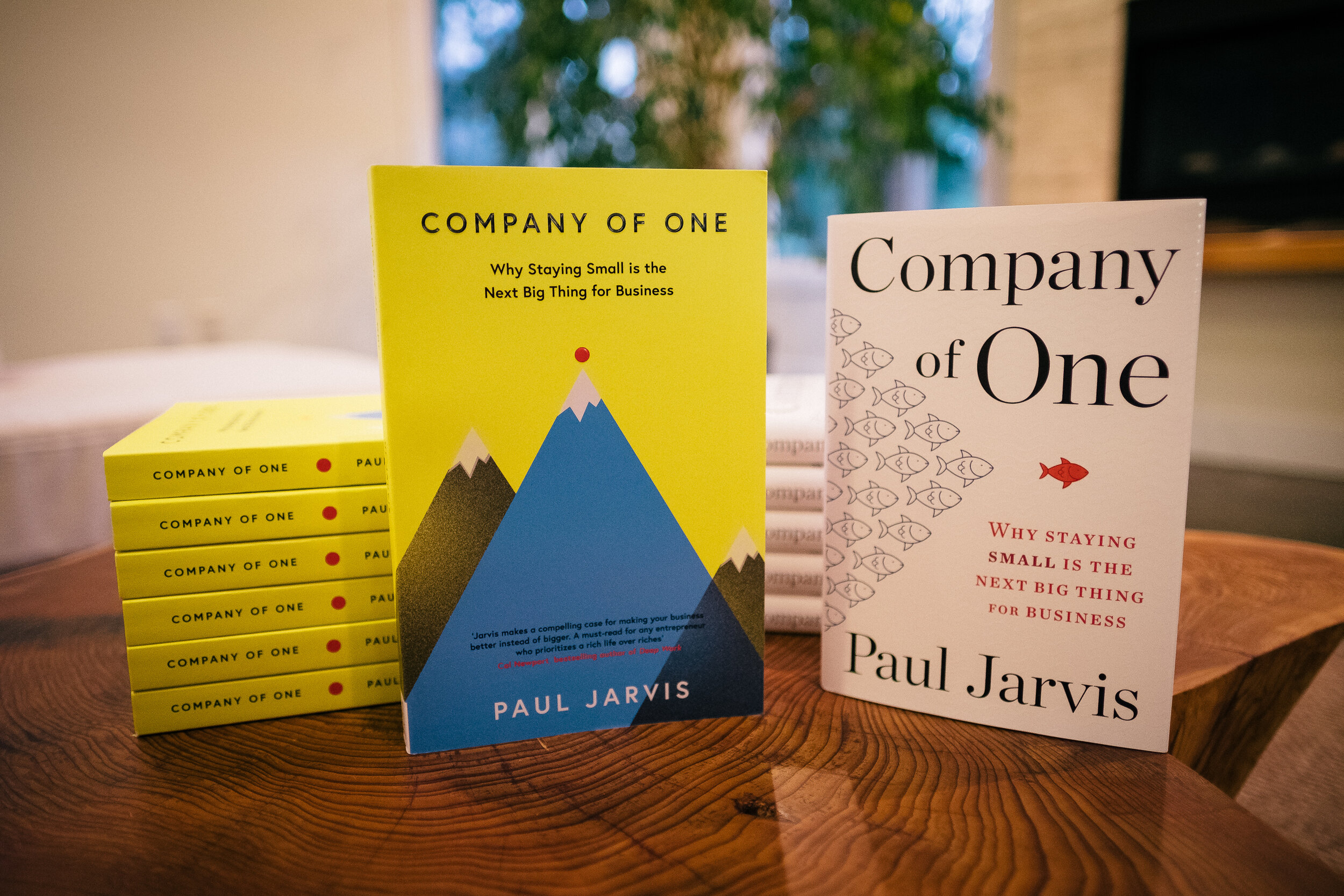Why Small Companies are the Future of Business
Some thoughts on “Company of One” by Paul Jarvis
Photo by Paul Jarvis
The premise of Paul Jarvis’s Company of One is that small businesses truly can have more customer-centric service, more meaningful and deliberate business values, and overall ability to navigate / pivot business efficiently. Companies of one (aka solopreneurs or sole proprietors) have less overhead and can be as flexible as they need to—as long as they are generating revenue to pay their expenses.
Jarvis argues that excessive growth is one of the main catalysts of a failing business (see: Silicon Valley’s “Growth Hacking”) due to dark UX patterns, exponential increases in outbound outreach without meaningful customer success systems in place, and dismissal of the reasons behind churn.
The idea/technique of just adding new customers via shady (or even non-shady but excessive) acquisition fails when user growth exceeds user retention. Obviously, this does not mean neglecting to look for new customers, but Jarvis argues that by focusing less on new customer growth and more on keeping old customers as happy as possible, companies will see better margins and understand the reasoning behind why customers stay in the first place (aka how to reduce churn).
Jarvis says there is a meaningful discrepancy between “growth as a goal and growth as a direct result of profit from sales of a valuable product” (68). He states that letting this idea of constant striving for growth drive all your company’s decisions (and even vanity metrics!) will cause higher churn. Small companies can test their smallest MVPs quickly and learn what does and does not work for their specific audiences.
It was a great exercise for me (as a company of one myself) to remind myself that there is so much benefit to staying small, agile, and flexible—and that you can provide significantly more personalized customer service that a large company could not at scale.
